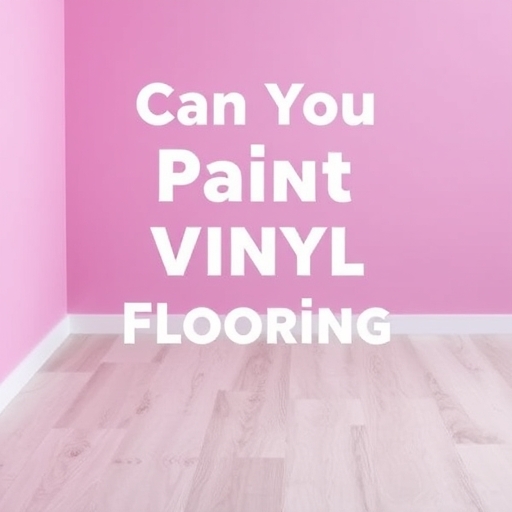Can You Paint Vinyl Flooring? A Comprehensive Guide
Vinyl flooring has become a popular choice for homeowners due to its durability, affordability, and wide variety of styles. However, over time, even the best vinyl floors can start to look worn or outdated. If you’re considering giving your vinyl flooring a fresh look, you may wonder: can you paint vinyl flooring? In this article, we will explore the ins and outs of painting vinyl flooring, including the benefits, challenges, and step-by-step instructions to achieve a successful transformation.
Understanding Vinyl Flooring
What is Vinyl Flooring?
Vinyl flooring is a synthetic flooring material made primarily from polyvinyl chloride (PVC). It is available in various forms, including sheets, tiles, and planks. Vinyl flooring is known for its:
- Water Resistance: Ideal for kitchens and bathrooms.
- Durability: Can withstand heavy foot traffic.
- Affordability: Generally less expensive than hardwood or tile.
- Variety: Comes in numerous colors, patterns, and textures.
- Cost-Effective: It’s a cheaper alternative to replacing the entire flooring.
- Customization: Allows for personalized designs and colors.
- Less Mess: Painting can be less disruptive than a full flooring replacement.
- Condition of the Floor: Ensure the vinyl is in good condition without significant damage.
- Type of Vinyl: Some vinyl surfaces may adhere better to paint than others.
- Intended Use: High-traffic areas may require more durable paint options.
- Floor Cleaner: A degreaser or mild soap.
- Sandpaper: Fine-grit (220) and medium-grit (120).
- Primer: A high-quality bonding primer suitable for vinyl.
- Paint: Use a durable floor paint or epoxy paint.
- Sealer: A clear polyurethane sealer for added durability.
- Paint Roller and Brushes: For even application.
- Painter’s Tape: To protect edges and create clean lines.
- Drop Cloths: To protect surrounding areas.
- Acrylic Floor Paint: Good for light foot traffic areas; easy to clean.
- Epoxy Paint: More durable and resistant to wear; ideal for high-traffic areas.
- Chalk Paint: Offers a matte finish and can be used for a vintage look.
- Apply the First Coat: Using a paint roller, apply the first coat of your chosen paint. Use a brush for edges and corners.
- Allow to Dry: Follow the drying time recommended by the paint manufacturer.
- Apply Additional Coats: Depending on the color and opacity, you may need to apply 2-3 coats for full coverage.
- Regular Cleaning: Use a soft broom or vacuum to remove dirt and debris. Clean with a damp mop using mild soap.
- Avoid Harsh Chemicals: Steer clear of abrasive cleaners that can damage the paint.
- Use Area Rugs: In high-traffic areas, consider placing area rugs to minimize wear.
The Appeal of Painting Vinyl
Painting vinyl flooring can be an appealing option for several reasons:
Can You Paint Vinyl Flooring?
Yes, you can paint vinyl flooring, but it requires careful preparation and the right materials. Here are some essential factors to consider before embarking on your painting project.
Pros and Cons of Painting Vinyl Flooring
| Pros | Cons |
|---|---|
| Cost-effective renovation | Potential for peeling or chipping |
| Customizable appearance | Requires preparation and time |
| Quick transformation | Not as durable as new flooring |
| Can cover stains and scratches | May require periodic touch-ups |
Key Considerations
Before painting your vinyl flooring, consider the following:
Preparing to Paint Vinyl Flooring
Step 1: Gather Your Supplies
To successfully paint vinyl flooring, you will need the following supplies:
Step 2: Clean the Floor
Thoroughly clean the vinyl flooring to remove any dirt, grease, or wax. Use a floor cleaner or a mixture of water and vinegar. Ensure the surface is completely dry before proceeding.
Step 3: Sand the Surface
Lightly sand the vinyl flooring with medium-grit sandpaper to create a rough surface for the primer to adhere to. After sanding, clean up any dust with a damp cloth.
Step 4: Apply Primer
Choose a high-quality bonding primer designed for vinyl surfaces. Apply a thin, even coat using a paint roller. Allow the primer to dry completely according to the manufacturer’s instructions.
Painting the Vinyl Flooring
Step 5: Choosing the Right Paint
When selecting paint for your vinyl flooring, consider the following options:
Step 6: Painting
Step 7: Sealing the Paint
Once the final coat of paint is dry, apply a clear polyurethane sealer to protect the finish. This step is crucial for enhancing durability, especially in high-traffic areas.
Maintenance and Care
Once your vinyl flooring is painted and sealed, proper maintenance is essential to prolong its lifespan:
FAQs about Painting Vinyl Flooring
1. How long does painted vinyl flooring last?
With proper preparation and maintenance, painted vinyl flooring can last anywhere from 3 to 5 years, depending on the quality of paint and foot traffic.
2. Is it safe to paint vinyl flooring?
Yes, it is safe to paint vinyl flooring as long as you use non-toxic paints and sealers. Ensure proper ventilation while painting.
3. Can I paint over textured vinyl flooring?
Yes, you can paint over textured vinyl flooring, but the texture may affect the final appearance. Ensure thorough cleaning and priming for the best results.
4. How do I touch up painted vinyl flooring?
To touch up painted vinyl flooring, lightly sand the area, clean it, and apply a small amount of paint followed by sealer.
5. Will painting vinyl flooring affect its warranty?
Painting vinyl flooring typically voids the warranty, so it’s essential to check with the manufacturer before proceeding.
Conclusion
Painting vinyl flooring can be a rewarding DIY project that breathes new life into your home. By following the steps outlined in this guide, you can achieve a beautiful, customized look without the expense of replacing your flooring. Just remember to take your time during preparation and to choose high-quality materials for the best results. Happy painting!

